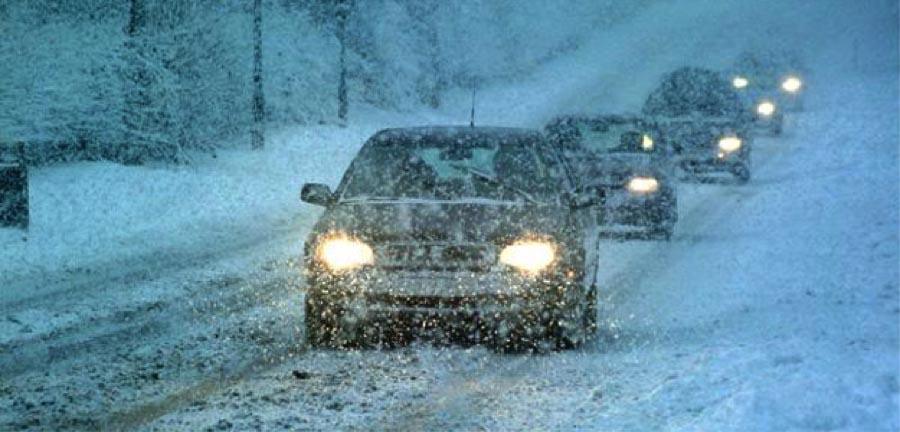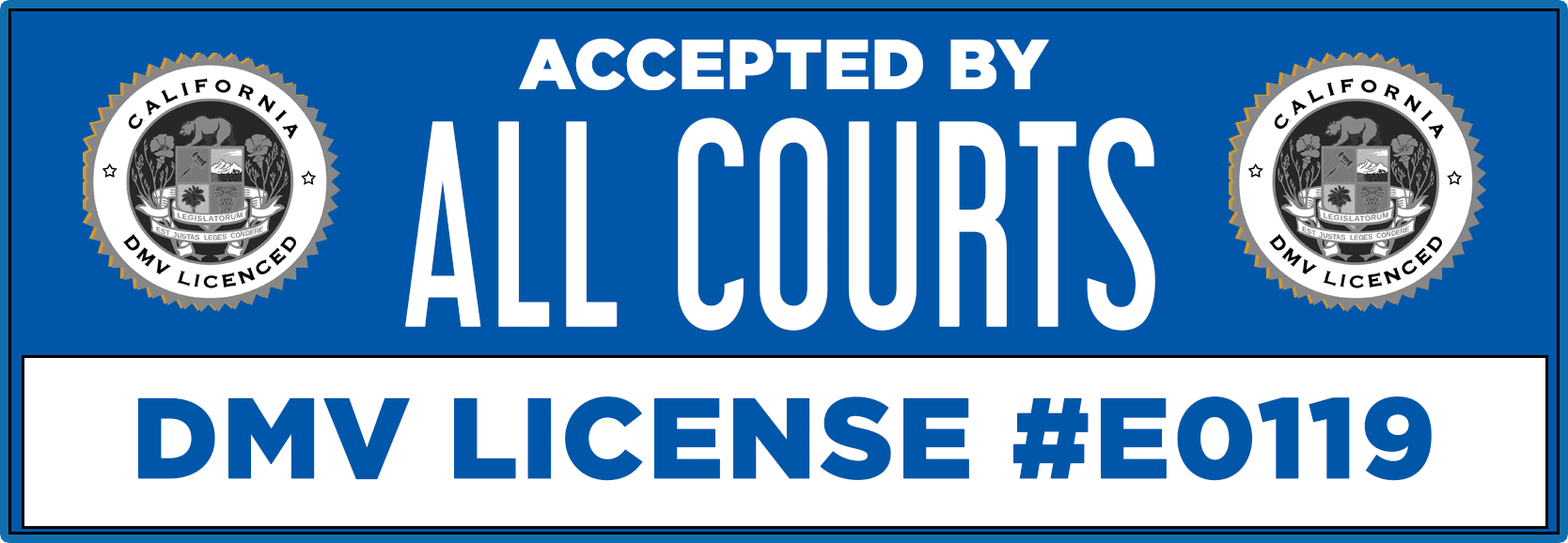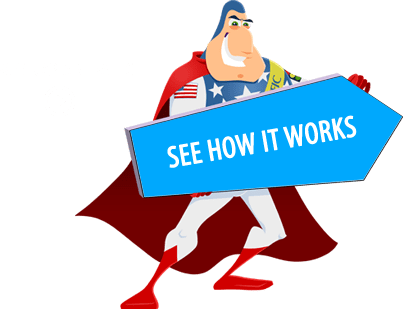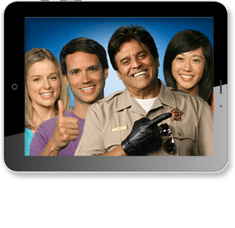Surviving Poor Driving Conditions

SLIPPERY ROADS Slow down at the first sign of rain on the road. This is when many roads are the most slippery because oil and dust have not been washed away. If the road is slippery, it will not give your tires the grip they need. You must drive slower than you would on a dry road.
Here are some guidelines to help you adjust speed:
- Wet road, go 5 to 10 miles slower
- Stay on the paved portion of the roadway
- Drive in the tracks of the car ahead
- Allow more of a space cushion
- Avoid sudden movements
- Packed snow, cut speed in half
- Ice, slow to a crawl
GOING THROUGH DEEP WATER Going through deep water can be a very dangerous situation. The water could be so deep that it may leak into your engine and stall it. This is especially dangerous in a flood situation. If you travel through deep enough water, your brakes will also be affected. Remember to safely pump your brakes to help remove excess water that could slow the performance of your brakes.
Keep in mind the time of year you are driving in. This is most important when you are taking a long trip. The road and weather conditions during the summer may be vastly different from the wintertime.
VAPOR LOCK AT HIGH ALTITUDES Driving in high altitudes may promote overheating and vapor lock in some vehicles. Vapor lock occurs when the fuel in your vehicle vaporizes, causing your vehicle to act as if it were out of gas. If it should occur, usually allowing the vehicle to cool will solve this problem. Carrying extra water in the trunk is generally a good idea and will help should a driver find that his or her engine has overheated.
When you drive in snowy areas, carry chains in case you find yourself in conditions where you can’t drive without them. Make sure you carry the correct number of chains and that they will fit your drive wheels. Learn how to put the chains on before you need to use them. Also remember to maximize your visibility by utilizing your defrosters and windshield wipers.
Close to the freezing point, the road is icy and may be more slippery than at colder temperatures.
- On cold, wet days, shade from trees or buildings can hide spots of ice. These areas freeze first and dry out last.
- Bridges and overpasses can also hide spots of ice. They tend to freeze before the rest of the road does.
- If it starts to rain on a hot day, pavement can be very slippery for the first few minutes. Heat causes oil in the asphalt to come to the surface. It makes the road slippery until the oil is washed off.
In a very heavy rain or snowstorm, you may not be able to see more than 100 feet ahead. When you can’t see any farther than that, you cannot safely drive faster than 30 mph. You may have to stop from time to time to wipe mud or snow off your windshield, headlights, and taillights. It is wise to turn on your low beam headlights when visibility is poor even in daylight. Light from high beams will reflect back and cause glare. You may have to flash your headlights under certain circumstances to get the attention of another driver who may not see you.
Driving in snow and ice affects how your vehicle turns as well. As a result of reduced traction, stopping distances are increased and when the pavement is slippery from ice or snow, turning a vehicle requires reducing the speed and beginning the turn sooner.
To help avoid skidding on slippery surfaces, you should:
- Drive more slowly and stay further behind the vehicle ahead.
- Slow down as you approach curves and intersections.
- Avoid fast turns.
- Avoid quick stops. “Pump” the brakes to slow or stop. (Antilock brakes do not require pumping.)
- Shift to low gear before going down a steep hill.
- Watch for any troubles where ice or deep water collects.
If the brakes get wet, dry them by pressing the gas pedal and brake pedal at the same time so that the car drives against the pressure of the brakes. Do this only until the brakes begin working.
Avoid especially slippery areas, such as ice patches, wet leaves, oil, or deep puddles.
A sand or dust storm usually arrives suddenly in the form of an advancing wall of sand or dust and debris which may be miles long and several thousand feet high. They strike with little warning, making driving conditions hazardous. Blinding, choking dust can quickly reduce visibility, causing collisions which could lead to chain collisions, creating massive pileups. Sand /dust storms usually last only a few minutes, but the actions a motorist takes during the storm may be the most important of his or her life. Here are some safety tips:
- If dense dust is observed blowing across or approaching a roadway, pull your vehicle off the pavement as far as possible, stop, turn off lights, set the emergency brake, take your foot off of the brake pedal to be sure the tail lights are not illuminated.
- Don’t enter the sand/dust storm area if you can avoid it.
- If you can’t pull off the roadway, proceed at a speed suitable for visibility, turn on lights and sound horn occasionally. Use the painted center line to help guide you. Look for a safe place to pull off the roadway.
- Never stop on the traveled portion of the roadway.When you enroll in a traffic school program, you will learn about the topics mentioned above and more. A motor vehicle can be a safe mode of transportation, or it can be a very dangerous weapon. If you want to learn how to increase the chances of making it to your destination in one piece, complete our traffic school online today. The program is ComedyTrafficSchool.com. Take online traffic school the fun way with our award winning course. Our traffic school course is the perfect choice for anyone who recently received a traffic ticket; keep points masked from your driving record,, your auto insurance rates low and become a better, safer driver!
Many collisions happen because a driver didn’t see a stalled car until it was too late to stop. If your vehicle STALLS or you are having car trouble and have to stop, follow these rules:
- If at all possible, pull off the road away from all traffic.
- If you cannot get completely off the road, try to stop where people can see you and your car from behind. Don’t stop just over a hill or just around a curve.
- Turn on your emergency flashers to show a hazard or collision is ahead. You should also use your emergency flashers if you are not moving. If your car doesn’t have flashers, turn signals may be used instead.
- If it is safe, lift the hood to signal an emergency.
- Give other drivers plenty of warning. If you have them, place emergency flares or triangles 200 to 300 feet behind the car. This allows other drivers time to change lanes if necessary. Be very careful when using flares. They may cause fires, especially when used near flammable liquids.
If you don’t have emergency flares, follow the rules listed above and stay in your vehicle until help arrives. Be careful for your safety and stay off the road. Remember, don’t even try to change a tire if it means you have to stand in a traffic lane.
Sometimes a road that is normally safe becomes dangerous when slippery. Ice and packed snow on the road can cause the car to skid, especially if you are driving fast or going downhill. If you do go into a skid, ease off the gas pedal, stop braking, and turn the steering wheel in the direction of the skid. If you can’t control your car on a slippery surface, try to find something to stop you. Try to get a wheel on dry pavement or on the shoulder of the road. You may have to slowly edge into a snow bank or some bushes to stop.
When you enroll in a traffic school program, you will learn about the topics mentioned above and more. A motor vehicle can be a safe mode of transportation, or it can be a very dangerous weapon. If you want to learn how to increase the chances of making it to your destination in one piece, complete our traffic school online today. The program is ComedyTrafficSchool.com. Take online traffic school the fun way with our award winning course. Our traffic school course is the perfect choice for anyone who recently received a traffic ticket; keep points masked from your driving record,, your auto insurance rates low and become a better, safer driver!





